
THEORETICAL AND MATHEMATICAL PHYSICS
Scope & Guideline
Exploring the Depths of Mathematical Innovation
Introduction
Aims and Scopes
- Mathematical Physics:
The journal emphasizes mathematical techniques that are essential for solving complex physical problems. This includes the application of advanced calculus, differential equations, and algebraic structures to understand physical phenomena. - Integrable Systems:
A significant focus is placed on integrable systems, exploring solutions to nonlinear differential equations and their implications in various physical contexts, such as fluid dynamics and quantum mechanics. - Quantum Field Theory and Statistical Mechanics:
The journal covers research in quantum field theory, including topics like gauge theories, supersymmetry, and quantum corrections, alongside statistical mechanics, particularly in relation to phase transitions and critical phenomena. - Nonlinear Dynamics and Solitons:
Research on nonlinear dynamics is prevalent, with significant contributions to the understanding of solitons, wave propagation, and chaotic systems, which are crucial for both classical and quantum systems. - Applications to Astrophysics and Cosmology:
The journal also features studies that apply theoretical and mathematical methods to astrophysical problems, including black hole physics, cosmological models, and the behavior of matter under extreme conditions.
Trending and Emerging
- Quantum Information and Computation:
There is a growing emphasis on quantum information theory, quantum computing, and the interplay between quantum mechanics and information science, indicating a significant trend towards understanding the foundations of quantum theory. - Nonlinear and Fractional Differential Equations:
Recent publications highlight a surge in studies involving nonlinear and fractional differential equations, showcasing their applications in various physical contexts, including complex systems and anomalous diffusion. - Topological and Geometric Methods:
An emerging focus on topological and geometric methods in physics is evident, particularly in the analysis of quantum field theories and condensed matter systems, reflecting a broader interest in the geometric aspects of theoretical physics. - Machine Learning Applications in Physics:
The integration of machine learning techniques in theoretical physics research is becoming more prominent, with studies exploring their applications in solving complex equations and modeling physical systems. - Astrophysical Phenomena and Cosmological Models:
There is an increasing trend in research applying theoretical methods to understand astrophysical phenomena, including dark matter and energy, gravitational waves, and the structure of the universe, reflecting the intersection of theoretical physics with cosmology.
Declining or Waning
- Classical Mechanics Applications:
There has been a noticeable reduction in classical mechanics applications, as the focus has shifted towards more complex and high-dimensional systems, particularly in the context of quantum and nonlinear dynamics. - Low-Dimensional Quantum Systems:
Research focusing specifically on low-dimensional quantum systems, such as one-dimensional models, has seen a decrease, likely due to the increasing interest in high-dimensional and more complex quantum phenomena. - Deterministic Chaos in Classical Systems:
The exploration of deterministic chaos within classical systems appears to be waning, as researchers gravitate towards stochastic processes and quantum chaos, reflecting a broader interest in the quantum aspects of chaos.
Similar Journals
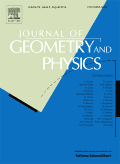
JOURNAL OF GEOMETRY AND PHYSICS
Fostering Collaboration in Geometry and Physics ResearchThe JOURNAL OF GEOMETRY AND PHYSICS is a distinguished peer-reviewed journal published by Elsevier, dedicated to fostering the exploration and dissemination of research at the intersection of geometry and physics. Established in 1984, this journal covers a broad range of topics, including the theoretical aspects of geometry, topology, and mathematical physics, making it an essential resource for researchers and practitioners in these fields. With an impressive Q2 ranking in various categories, including Geometry and Topology, Mathematical Physics, and General Physics and Astronomy, the journal ranks among the top 25% of its peers, reflecting its significant impact in advancing relevant discourse. Although currently not offered as an open-access publication, it maintains a strong readership due to its contribution to high-quality scholarly articles and critical reviews. The journal’s commitment to stimulating innovative research continues to solidify its reputation as a pivotal platform for exchanging ideas and fostering collaboration within the scientific community.
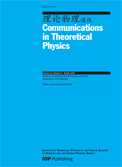
COMMUNICATIONS IN THEORETICAL PHYSICS
Advancing the frontiers of theoretical physics.COMMUNICATIONS IN THEORETICAL PHYSICS is a distinguished journal published by IOP Publishing Ltd, focusing on the broad and evolving field of theoretical physics. With an ISSN of 0253-6102 and an E-ISSN of 1572-9494, this journal provides a platform for the dissemination of innovative research that contributes to the understanding of complex physical concepts. Situated in the United Kingdom, it has established itself as a pivotal resource from 1996 to 2024, achieving a commendable Q2 ranking in the category of Physics and Astronomy (miscellaneous) for 2023. With a Scopus ranking of #18 out of 81 in its category, demonstrating a 78th percentile, this journal plays a crucial role in enhancing scholarly communication among researchers, professionals, and students alike. Although it does not currently offer Open Access options, the journal's comprehensive scope and commitment to high-quality peer-reviewed research underline its significance in the scientific community, making it an essential reading for anyone engaged in theoretical physics.
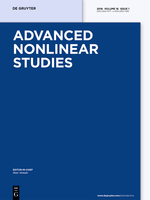
ADVANCED NONLINEAR STUDIES
Unveiling the Complexity of Nonlinear SystemsADVANCED NONLINEAR STUDIES is a premier academic journal dedicated to the exploration of nonlinear phenomena across various scientific disciplines, particularly within the fields of mathematics and statistical physics. Published by De Gruyter Poland Sp. z o.o., this journal has established itself as a significant resource for researchers and practitioners alike since its inception in 2001. With an impressive Q1 ranking in both mathematics and statistical/nonlinear physics, it remains at the forefront of innovative research, providing open access to its content since 2022, thus ensuring a wide dissemination of groundbreaking findings. In the latest Scopus rankings, it boasts excellent standing, placing it in the top 16% for general mathematics and in the upper tier for statistical and nonlinear physics. The journal aims to foster scientific discourse and collaboration, making it an essential platform for advancing knowledge and understanding in nonlinear studies. Located in Warsaw, Poland, ADVANCED NONLINEAR STUDIES continues to attract contributions from a global network of scholars, making it a vital hub for contemporary research in this dynamic field.

Communications Physics
Illuminating the path of interdisciplinary collaboration.Communications Physics is a premier open access journal published by Nature Portfolio, dedicated to disseminating high-quality research in the field of Physics and Astronomy. Since its inception in 2018, the journal has rapidly established itself as a vital platform for innovative scientific communication, boasting an impressive Impact Factor and achieving Q1 status in the 2023 category of Physics and Astronomy (miscellaneous). With a Scopus rank of #31 out of 243, placing it within the 87th percentile, Communications Physics attracts a global audience of researchers, professionals, and students eager to engage with cutting-edge findings. The journal supports open access, ensuring that research is freely available to the public, which enhances its visibility and encourages broader discussions within the scientific community. Located in Berlin, Germany, Communications Physics aims to bridge the gap between various disciplines within physics, fostering interdisciplinary collaboration and inspiring future research endeavors.
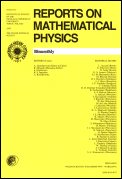
REPORTS ON MATHEMATICAL PHYSICS
Unveiling Complexities in Mathematical PhysicsREPORTS ON MATHEMATICAL PHYSICS is a distinguished journal published by PERGAMON-ELSEVIER SCIENCE LTD, focusing on the intricate interplay between mathematics and physics. Established in the United Kingdom, this journal has been contributing to the academic community since its inception, publishing significant research findings that explore the theoretical underpinnings of physical phenomena. With an ISSN of 0034-4877 and an E-ISSN of 1879-0674, the journal maintains a consistent publishing history, converging research from 1970 to 2024. It is currently ranked Q3 in both Mathematical Physics and Statistical and Nonlinear Physics categories, reflecting its commitment to maintaining a high standard of scholarly work. Although it lacks Open Access options, its targeted audience of researchers, professionals, and students will find invaluable insights into advanced mathematical methods, statistical applications, and innovative approaches in physics. With its esteemed reputation and critical role in the field, REPORTS ON MATHEMATICAL PHYSICS continues to be an essential resource for those seeking to deepen their understanding of mathematical applications in physical systems.
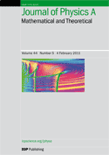
Journal of Physics A-Mathematical and Theoretical
Bridging Theory and Application in Mathematical PhysicsThe Journal of Physics A-Mathematical and Theoretical, published by IOP Publishing Ltd, is a premier peer-reviewed journal dedicated to advancing the understanding of mathematical physics, modeling, and simulation methods within the dynamic field of physics and astronomy. Established in the United Kingdom, this journal has made significant contributions over the years, maintaining a strong reputation as a Q1 and Q2 ranked journal across various categories, reflecting its influence in the scientific community. With a focus on innovative and theoretical approaches, it provides a platform for researchers, professionals, and students to disseminate their findings and engage with groundbreaking methodologies. Despite its lack of open access options, the journal's high impact factor and Scopus rankings, which place it in the top percentiles across multiple disciplines, underscore its critical role in fostering scholarly communication and collaboration in mathematical and theoretical physics. As we move through its converged years from 2007 to 2024, the Journal of Physics A continues to be a pivotal contributor to the landscape of contemporary physics, stimulating discussions and advancing knowledge in an ever-evolving realm.

Advances in Mathematical Physics
Bridging Disciplines with Mathematical PrecisionAdvances in Mathematical Physics is a premier open-access journal published by HINDAWI LTD, dedicated to the dissemination of research in the fields of applied mathematics and physics. With its ISSN 1687-9120 and E-ISSN 1687-9139, this journal has been a vital platform for innovative studies since its inception in 2009, fostering a collaborative environment for researchers and professionals alike. The journal features a wide range of topics, including but not limited to mathematical models, computational physics, and interdisciplinary applications, thus attracting a diverse readership. Ranked in the Q3 quartile for both Applied Mathematics and Physics and Astronomy, it serves as a significant resource for academics looking to explore cutting-edge developments and theoretical advancements. With an emphasis on open accessibility, Advances in Mathematical Physics ensures that research findings are readily available to the global academic community, leveling the playing field for emerging scholars and seasoned researchers. By consistently showcasing high-quality manuscripts, the journal contributes substantially to the fields of mathematics and physics, encouraging scholarly dialogue and advancing knowledge across a myriad of applications.

REVIEWS IN MATHEMATICAL PHYSICS
Fostering Insightful Analyses in Mathematical PhysicsREVIEWS IN MATHEMATICAL PHYSICS is a premier scholarly journal published by WORLD SCIENTIFIC PUBL CO PTE LTD, focusing on the versatile and dynamic field of mathematical physics. Established in 1996, this journal has quickly become a pivotal resource for researchers and professionals seeking in-depth analyses and reviews of contemporary advancements in both mathematical and statistical physics. With an impressive categorization in Q2 for both Mathematical Physics and Statistical and Nonlinear Physics as of 2023, it ranks among the top in its field, boasting a Scopus Rank of #27 in Mathematical Physics and #29 in Statistical and Nonlinear Physics. While currently not available as an open-access platform, the journal remains valuable for its rigorous peer-reviewed articles that aim to bridge the gap between theoretical aspects and practical applications in physics. Given its significant influence—evidenced by a robust footprint in the academic community—REVIEWS IN MATHEMATICAL PHYSICS is essential reading for anyone dedicated to advancing their knowledge and understanding of complex physical phenomena.

LETTERS IN MATHEMATICAL PHYSICS
Fostering multidisciplinary dialogue for groundbreaking discoveries.LETTERS IN MATHEMATICAL PHYSICS, published by Springer, stands as a pivotal platform in the realm of mathematical and statistical physics. With a commitment to disseminating innovative research findings since its inception in 1975, this journal serves both established and emerging scholars by fostering a multidisciplinary dialogue that is vital for the advancement of theoretical concepts and practical applications. The journal boasts an impressive Q1 ranking in both Mathematical Physics and Statistical and Nonlinear Physics categories as of 2023, reflecting its significant impact in these fields, supported by a strong Scopus ranking of 36th and 37th in respective categories. Although it operates on a traditional access model, the journal’s convergence until 2024 ensures a rich repository of literature that aids researchers, professionals, and students in navigating the complexities of mathematical physics. With its strategic location in the Netherlands, LETTERS IN MATHEMATICAL PHYSICS is poised to continue its tradition of excellence, encouraging contributions that deepen the understanding of mathematical frameworks underlying physical phenomena.

Annals of Physics
Advancing the frontiers of Physics and Astronomy.Annals of Physics is a premier journal published by Academic Press Inc Elsevier Science, specializing in the expansive field of Physics and Astronomy. Since its inception in 1957, this journal has played a pivotal role in disseminating high-quality research and advancements across various sub-disciplines of physics. With a notable impact factor making it rank in the Q1 category for 2023, it stands among the top tier of scholarly publications, specifically sitting at Rank #63 out of 243 in the field, placing it in the 74th percentile according to Scopus metrics. Researchers are encouraged to submit their findings to reach a broad audience without the constraints of Open Access fees, promoting extensive visibility within the academic community. As we look ahead to 2024, Annals of Physics continues to be an essential resource for professionals, students, and academics striving to advance the frontiers of knowledge in physics and astronomy.